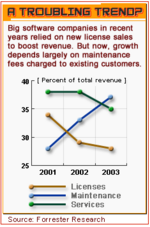If you ever wondered what it takes for a startup to succeed, please read the email below sent from the CEO of one of our portfolio companies to his whole staff. Sure, startups don’t have the cash, the people, the distribution channel, and brand to compete with the established players but passion, drive, and an insanely great product can take you a long way.
Dear team members:
I have always believed that the key reason for our continued success over the past few years has been, the contributions made by each and every one of you. Without your sincerity, commitment and hard work, we would not have become the #1 partner for Company X.
I want to share with all of you, an extremely powerful example of sincerity and commitment, shown by one of our fellow team members. I am sure that each one of you will feel proud of him after reading what he accomplished this week!
On Tuesday, July 13th, after finishing a bunch of very successful presentations in the Washington DC Area, John Smith (aka Mad Dog from his army days) took a flight for Memphis, TN where he had to do a presentation in the morning on Wednesday, July 14th. John had to change flights in Atlanta on the way to Memphis. Due to extremely bad weather on the east coast, his flight into Atlanta got delayed and he missed his connecting flight to Memphis. The next available flight to Memphis was the next day at noon, which would cause him to miss his morning presentation. So John asked the airline if they would reimburse him for a rental car to drive from Atlanta to Memphis, thinking that it would be a few hours drive. The airline agreed, so John rented a car and started driving to Memphis from Atlanta. John had been in touch with Dave when all this was going on, so after he started driving, Dave did a quick check on Mapquest and realized that it was a 400 mile, 7 hour drive and not a “few” hours drive as John had thought (it never hurts to be good at Geography!). But Mad Dog did not stop or turn around, he kept driving (with a few coffee breaks to help keep him awake at the driving wheel). He reached Memphis at 5:30 AM, rested for an hour at his hotel and went on to do his presentation – which was very well received. Folks, this story does not end here………..
John then took a flight from Memphis to Jackson, MS where he was scheduled to train 30 users for one of our major customers THROUGH THE NIGHT of Wednesday, July 14th! He got into Jackson, slept for a couple of hours and then went to the customers offices to conduct training for these 30 users from 10 PM to 5:30 AM! The training was extremely well received (I have received e-mails from the Company X Sales managers giving kudos to John for his quality of training that night). Today morning he flew from Jackson, MS back home to Dallas, TX.
John: I am very proud of your commitment and dedication to work. Please make sure you get some well deserved rest over the weekend.
PS: In the future, please call one of us from the airport to check how far your destination is, before you start driving!
Regards,
CEO of portfolio company
